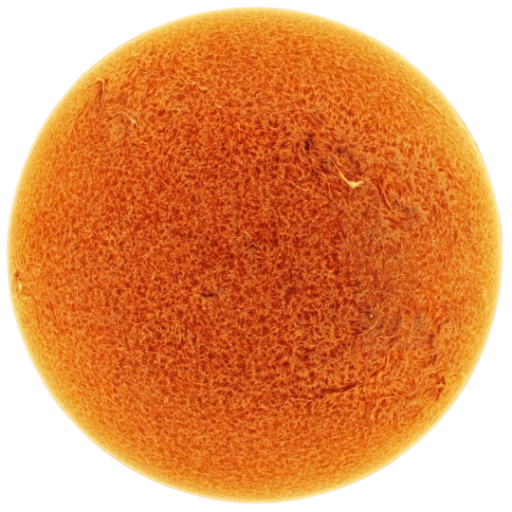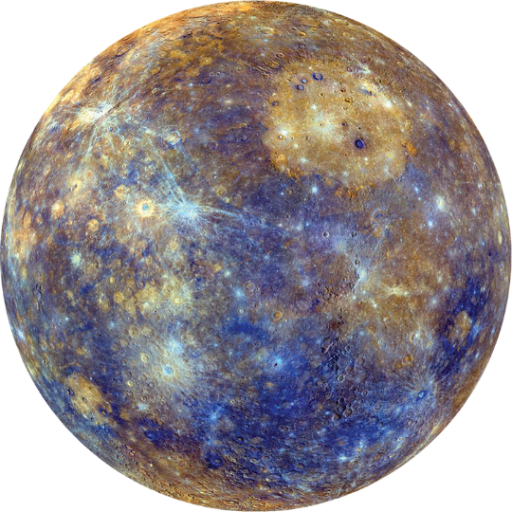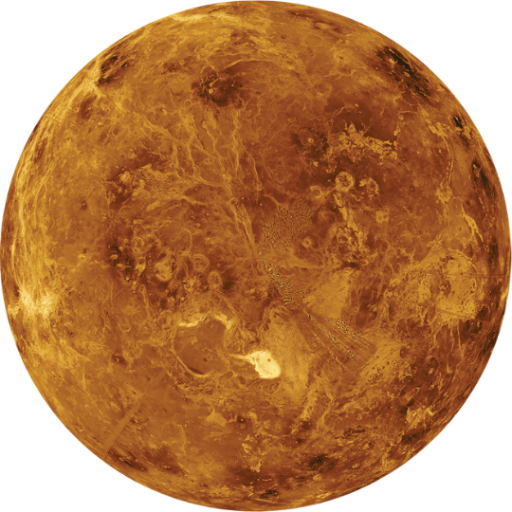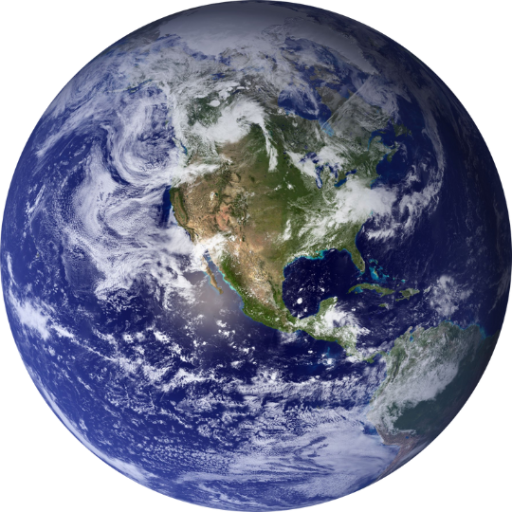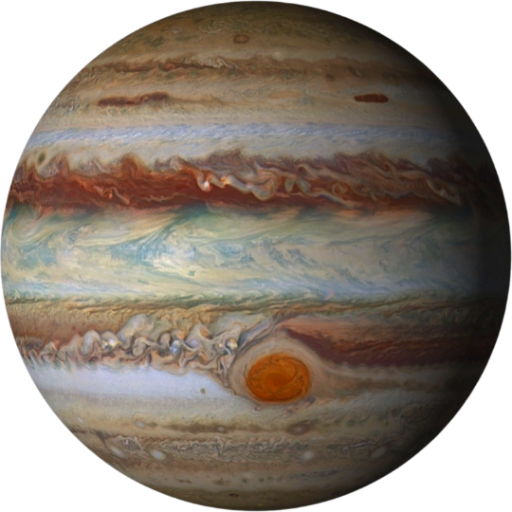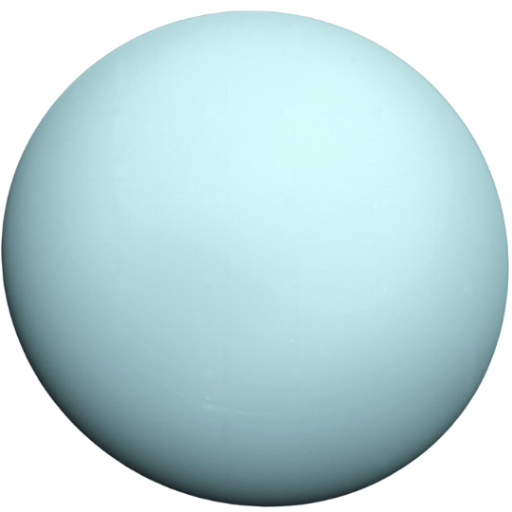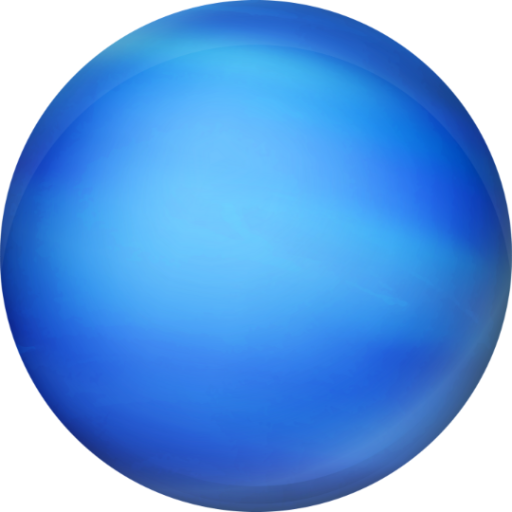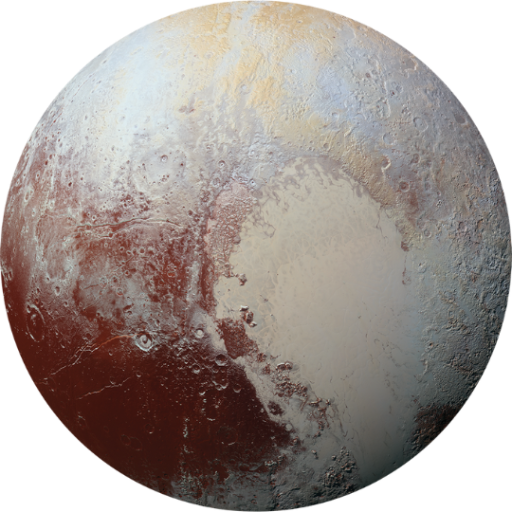#SolarSystem Adventure
Our solar system is an immense and captivating assembly of cosmic entities, comprising a star (the Sun), planets, moons, asteroids, comets, various other objects.
You can explore intricacies of our Solar System by reading the information below.
Sun
The Sun, the central star of our Solar System, is essential for maintaining the orbits of planets, moons, and other celestial bodies. Its core reaches extremely high temperatures, up to 15 million degrees Celsius, where nuclear fusion transforms hydrogen into helium, releasing immense energy. About 4.6 billion years ago, the Sun formed from a massive, rotating cloud of gas and dust called the solar nebula.
The Sun travels around the Galactic Center at a distance of 24,000 to 28,000 light-years. It is located 1 AU (149,597,870 km) or roughly 8 light-minutes from Earth. With a diameter of about 1,391,400 km (864,600 mi), it is 109 times wider than Earth. The Sun's mass is around 330,000 times that of Earth, making up approximately 99.86% of the Solar System's total mass.
Eventually, like all stars, our Sun will deplete its energy reserves. As it approaches the end of its life, it will expand into a red giant, growing so large that it will swallow Mercury, Venus, and potentially Earth. Scientists estimate that the Sun is currently just under halfway through its lifespan and will continue to exist for approximately another 5 billion years before transitioning into a white dwarf.
Did you know?
- The Sun is located in the Milky Way galaxy in a spiral arm called the Orion Spur that extends outward from the Sagittarius arm
- Even though the Sun is the center of our solar system and essential to our survival, it’s only an average star in terms of its size
- Many solar systems have more than one star
Mercury
Mercury, the closest planet to the Sun and the smallest in our solar system, is only slightly larger than Earth's Moon. It rotates slowly, completing one spin every 59 Earth days. However, when Mercury moves fastest in its elliptical orbit and is nearest to the Sun, its rotation doesn't follow the typical pattern of sunrise and sunset seen on most planets. Instead, from certain parts of its surface, the morning Sun briefly rises, sets, and rises again. The same phenomenon occurs in reverse at sunset in other areas.
Mercury's axis is tilted only 2 degrees relative to its orbital plane around the Sun, causing it to spin almost perfectly upright and preventing the formation of seasons as seen on many other planets. A single solar day on Mercury (a full day-night cycle) lasts 176 Earth days, which is slightly more than two Mercury years. Rather than an atmosphere, Mercury has a thin exosphere composed of atoms ejected from its surface by solar wind and meteoroid impacts. This exosphere primarily contains oxygen, sodium, hydrogen, helium, and potassium.
Distance from Sun: 0.4 AU (58 million km)
One way light time from the Sun: 3.862205 mins
Length of Year: 88 Earth Days
Planet type: Terrestrial
Did you know?
- Mercury's day temperatures can reach highs of 800°F (430°C). Without an atmosphere to retain that heat at night, temperatures can dip as low as -290°F (-180°C)
- Mercury is only slightly larger than Earth's Moon
- Mercury is the fastest planet
Venus
Venus, the second planet from the Sun, is Earth's nearest planetary neighbour. It is the third brightest object in the sky, following the Sun and Moon. Venus shares a similar structure and size with Earth, often earning it the nickname "Earth's evil twin." Its thick atmosphere causes a runaway greenhouse effect, trapping heat and making it the hottest planet in our solar system, with surface temperatures high enough to melt lead.
Beneath its dense, continuous clouds, the surface features volcanoes and deformed mountains. At the surface it has a mean temperature of 737 K (464 °C; 867 °F) and a pressure of 92 times that of Earth's at sea level. At its closest approach, Venus is approximately 24 million miles (38 million kilometers) from Earth. However, most of the time, the two planets are much farther apart, with the maximum distance reaching about 162 million miles (261 million kilometers).
If we could slice Venus and Earth in half from pole to pole and place them side by side, they would appear strikingly similar. Both planets have an iron core surrounded by a hot-rock mantle, and a thin rocky crust forms their exterior. On both planets, this thin crust can change shape and occasionally erupt as volcanoes due to the shifting heat and pressure deep within.
On Earth, the gradual movement of continents over millennia, known as "plate tectonics," reshapes the surface. A similar process might have occurred on Venus in its early history.
Today, a key aspect of this process may still be active: subduction, where one continental plate slides beneath another, potentially triggering volcanoes. Subduction is considered the initial stage in the development of plate tectonics.
Distance from Sun: 0.72 AU (108 million km)
One way light time from the Sun: 5.978053 mins
Length of Year: 225 Earth Days
Planet type: Terrestrial
Did you know?
- A day on Venus is longer than its year
- Venus rotates backward on its axis compared to most planets in our solar system. This means the Sun rises in the west and sets in the east, opposite of what we see on Earth
- Venus is an unlikely place for life as we know it, but some scientists theorise microbes might exist high in the clouds where it’s cooler
Earth
While Earth, our home, is only the fifth largest planet in the solar system, it is unique for having liquid water on its surface. Slightly larger than nearby Venus, Earth is the largest of the four rocky and metallic planets closest to the Sun. Located an average of 93 million miles (150 million kilometers) from the Sun, Earth is exactly one astronomical unit (AU) away. This unit, defined as the distance from the Sun to Earth, allows for easy comparison of the distances of other planets from the Sun.
Earth is made up of four main layers: the inner core, outer core, mantle, and crust. The inner core, located at the planet's center, is a solid sphere composed of iron and nickel with a radius of about 759 miles (1,221 kilometers) and temperatures reaching up to 9,800 degrees Fahrenheit (5,400 degrees Celsius). Surrounding the inner core is the outer core, a fluid layer about 1,400 miles (2,300 kilometers) thick, also made of iron and nickel. Between the outer core and the crust lies the mantle, the thickest of all layers.
The mantle, a hot, viscous layer of molten rock, is approximately 1,800 miles (2,900 kilometers) thick and has a texture similar to caramel. Earth's outermost layer, the crust, averages about 19 miles (30 kilometers) in depth on land. However, beneath the ocean, the crust is thinner, extending roughly 3 miles (5 kilometers) from the seafloor to the top of the mantle.
Distance from Sun: 1 AU (150 million km)
One way light time from the Sun: 8.350022 mins
Length of Year: 365.25 Earth Days
Planet type: Terrestrial
Did you know?
- Earth's atmosphere is 78 percent nitrogen, 21 percent oxygen and 1 percent other ingredients—the perfect balance to breathe and live
- The speed of Earth's spin is about 1,000 miles per hour (1,600 km per hour) at the equator
- Earth's longest mountain range is also underwater, at the bottom of the Arctic and Atlantic oceans. It is four times longer than the Andes, Rockies and Himalayas combined
Mars
Mars is among the most explored objects in our solar system and the only planet where rovers have been sent to traverse its alien terrain. With a radius of 2,106 miles (3,390 kilometers), Mars is roughly half the size of Earth. To put it in perspective, if Earth were the size of a nickel, Mars would be about the size of a raspberry. Mars completes one rotation around the Sun every 24.6 hours, which is quite close to the length of a day on Earth (23.9 hours). These Martian days are referred to as sols, short for "solar day."
Mars' axis of rotation is tilted 25 degrees relative to its orbital plane around the Sun. Similar to Earth, Mars experiences distinct seasons, but they last longer due to Mars' extended orbit around the Sun, owing to its greater distance. Unlike Earth, where seasons are evenly distributed over the year, each lasting about three months, Martian seasons vary in length because of the planet's elliptical, egg-shaped orbit.
Mars has two small moons, Phobos and Deimos, which may be captured asteroids. Their potato-like shapes result from having too little mass for gravity to make them spherical. Phobos, the larger and innermost moon, is heavily cratered with deep surface grooves. It is gradually moving closer to Mars and is expected to either crash into the planet or break apart in about 50 million years. Deimos, about half the size of Phobos, orbits Mars at a distance 2.5 times greater than that of Phobos. This oddly-shaped moon is covered in loose dirt that often fills its craters, giving it a smoother appearance compared to the pockmarked surface of Phobos.
The Red Planet actually displays a variety of colors, including brown, gold, and tan. Mars appears reddish due to the oxidation, or rusting, of iron in its rocks, regolith (Martian "soil"), and dust. This dust is stirred up into the atmosphere, giving the planet a predominantly red appearance when viewed from a distance.
Distance from Sun: 1.52 AU (228 million km)
One way light time from the Sun: 13 mins
Length of Year: 687 Earth Days
Planet type: Terrestrial
Did you know?
- Mars is the only planet we know of inhabited entirely by robots
- Mars is 53% smaller than Earth
- Mars' atmosphere is mostly carbon dioxide, argon, and nitrogen
Jupiter
Jupiter's distinctive stripes and swirls are cold, windy clouds of ammonia and water, situated in an atmosphere of hydrogen and helium. The dark orange stripes are known as belts, while the lighter bands are called zones, flowing east and west in opposite directions. Jupiter’s famous Great Red Spot is a massive storm larger than Earth that has been raging for centuries. With a radius of 43,440.7 miles (69,911 km), Jupiter is 11 times wider than Earth. If Earth were the size of a grape, Jupiter would be about the size of a basketball.
With four large moons and numerous smaller ones, Jupiter resembles a miniature solar system.
The International Astronomical Union officially recognises 95 moons orbiting Jupiter. The four largest moons—Io, Europa, Ganymede, and Callisto—were first observed by the astronomer Galileo Galilei in 1610 with an early telescope. Known as the Galilean satellites, these moons are among the most intriguing destinations in our solar system.
In addition to its cyclones and anticyclones, Jupiter is characterised by its distinctive belts and zones—white and reddish cloud bands encircling the planet. These bands are separated by strong east-west winds moving in opposite directions. Juno previously discovered that these winds, or jet streams, penetrate to depths of about 2,000 miles (3,200 km). Researchers are still working to understand how these jet streams form. Data collected by Juno during multiple passes suggest one possible clue: the ammonia gas in the atmosphere moves up and down in remarkable alignment with the observed jet streams.
Juno previously discovered polygonal arrangements of giant cyclonic storms at both of Jupiter's poles—eight in an octagonal pattern in the north and five in a pentagonal pattern in the south. Over time, mission scientists found that these atmospheric phenomena are remarkably resilient, staying in the same locations.
Distance from Sun: 5.2 AU (778 million km)
One way light time from the Sun: 41.863524 mins
Length of Year: 4,333 Earth Days
Planet type: Gas Giant
Did you know?
- Jupiter is the largest planet in our solar system – if it were a hollow shell, 1,000 Earths could fit inside
- Jupiter has the shortest day in the solar system, taking only 10.5 hours to spin around once on its axis
- Jupiter's enormous magnetic field is 16 to 54 times as powerful as that of the Earth
Saturn
Like its fellow gas giant Jupiter, Saturn is a massive ball composed primarily of hydrogen and helium. While other planets also have rings, none are as spectacular or complex as Saturn's. Additionally, Saturn boasts dozens of moons. The Saturn system offers a wealth of scientific discovery, from the water jets spraying from Enceladus to the methane lakes on the smoggy moon Titan, and it still holds many mysteries. With an equatorial diameter of about 74,897 miles (120,500 kilometers), Saturn is nine times wider than Earth. If Earth were the size of a nickel, Saturn would be roughly the size of a volleyball.
Saturn has the second-shortest day in the solar system, with a day lasting only 10.7 hours (the time it takes for Saturn to complete one rotation). A full orbit around the Sun (a year in Saturnian time) takes about 29.4 Earth years (10,756 Earth days). Saturn is home to a vast array of fascinating and unique moons. From the haze-covered Titan to the crater-filled Phoebe, each moon contributes to the story of the Saturn system. As of June 8, 2023, Saturn has 146 confirmed moons, with additional moons awaiting confirmation and official naming by the International Astronomical Union (IAU).
Saturn's rings are believed to be fragments of comets, asteroids, or shattered moons that were torn apart by the planet's intense gravity before they could reach it. These rings are composed of billions of small ice and rock particles, some coated with additional materials like dust. The ring particles vary in size, from tiny, dust-sized grains to large chunks as big as a house, with a few as massive as mountains. From Saturn’s cloud tops, the rings would appear mostly white. Interestingly, each ring orbits Saturn at a different speed.
Saturn's ring system extends up to 175,000 miles (282,000 kilometers) from the planet, but the vertical thickness of the main rings is typically about 30 feet (10 meters). The rings are named alphabetically in the order they were discovered and are generally close to one another, except for a gap called the Cassini Division, which is 2,920 miles (4,700 kilometers) wide and separates Rings A and B. The primary rings are A, B, and C, while Rings D, E, F, and G are fainter and were discovered more recently. From Saturn outward, the sequence of rings is D, C, B, Cassini Division, A, F, G, and E. Beyond these, the very faint Phoebe ring orbits in the vicinity of Saturn's moon Phoebe.
Distance from Sun: 9.5 AU (1.4 billion km)
One way light time from the Sun: 80.492437 mins
Length of Year: 10,759 Earth Days
Planet type: Gas Giant
Did you know?
- Nine Earths side by side would almost span Saturn’s diameter. That doesn’t include Saturn’s rings
- Saturn has an enormous spinning hexagon in the clouds at its north pole
- Few missions have visited Saturn: Pioneer 11 and Voyagers 1 and 2 flew by; But Cassini orbited Saturn 294 times from 2004 to 2017
Uranus
Uranus is an extremely cold and windy planet, known as an ice giant. It is encircled by 13 faint rings and 28 small moons. Uranus rotates with a nearly 90-degree tilt relative to its orbital plane, giving it the appearance of spinning on its side and orbiting the Sun like a rolling ball. Discovered in 1781 by astronomer William Herschel, Uranus was initially mistaken for either a comet or a star. It was only two years later, partly due to further observations by astronomer Johann Elert Bode, that Uranus was recognized as a new planet.
Uranus, with an equatorial diameter of 31,763 miles (51,118 kilometers), is four times wider than Earth. If Earth were the size of a nickel, Uranus would be roughly the size of a softball. A single day on Uranus lasts about 17 hours, which is the time it takes for the planet to complete one rotation on its axis. Uranus takes approximately 84 Earth years (30,687 Earth days) to complete one orbit around the Sun, marking a year in Uranian time.
Uranus has 28 known moons. Unlike the moons of other planets, which are typically named after figures from Greek or Roman mythology, Uranus' moons are named after characters from the works of William Shakespeare and Alexander Pope. The inner moons of Uranus seem to be composed of about half water ice and half rock. The composition of the outer moons is not yet fully understood, but they are probably captured asteroids.
Uranus has two groups of rings. The inner set comprises nine narrow, dark grey rings. There are also two outer rings: the innermost one has a reddish hue similar to dusty rings found elsewhere in the solar system, while the outer ring is blue like Saturn's E ring. Arranged by increasing distance from the planet, the rings are named Zeta, 6, 5, 4, Alpha, Beta, Eta, Gamma, Delta, Lambda, Epsilon, Nu, and Mu. Some of the larger rings are encircled by belts of fine dust.
Distance from Sun: 19 AU (2.9 billion km)
One way light time from the Sun: 162.842123 mins
Length of Year: 30,867 Earth Days
Planet type: Ice Giant
Did you know?
- Uranus rotates at a nearly 90-degree angle from the plane of its orbit. This unique tilt makes the planet appear to spin on its side
- Uranus is blue-green in color due to large amounts of methane, which absorbs red light but allows blues to be reflected back into space
- Voyager 2 is the only spacecraft to fly by Uranus.
- No spacecraft has orbited this distant planet to study it at length and up close
Neptune
Neptune, an ice giant, is dark, cold, and battered by supersonic winds, orbiting over 30 times farther from the Sun than Earth. It is the only planet in our solar system not visible without a telescope. In 2011, Neptune completed its first 165-year orbit since being discovered in 1846. Due to its great distance from the Sun, high noon on Neptune would appear as dim twilight from our perspective. The sunlight we experience on Earth is about 900 times brighter than the sunlight on Neptune.
A day on Neptune lasts about 16 hours, which is the time it takes for the planet to complete one rotation. Neptune completes a full orbit around the Sun (a year in Neptunian time) in roughly 165 Earth years (60,190 Earth days). At times, Neptune is even farther from the Sun than the dwarf planet Pluto. Pluto's orbit is highly eccentric and oval-shaped, bringing it inside Neptune's orbit for a 20-year period every 248 Earth years. The most recent occurrence of this was from 1979 to 1999. However, Pluto cannot collide with Neptune because for every three orbits Neptune makes around the Sun, Pluto completes two. This orbital resonance ensures that the two bodies never come close to each other.
Neptune’s axis of rotation is tilted 28 degrees relative to its orbital plane around the Sun, a tilt similar to that of Mars and Earth. This means Neptune experiences seasons like Earth does; however, because its year is so lengthy, each of the four seasons lasts over 40 years. Neptune also has at least five main rings and four prominent ring arcs currently identified. Moving outward from the planet, the main rings are named Galle, Leverrier, Lassell, Arago, and Adams. These rings are believed to be relatively young and have a short lifespan.
Neptune has 16 known moons, with Triton being the largest. Triton was discovered on October 10, 1846, by William Lassell, just 17 days after Johann Gottfried Galle discovered Neptune. Triton is unique among the solar system's large moons because it orbits Neptune in the opposite direction to the planet's rotation (a retrograde orbit), indicating it may have been a separate object that Neptune later captured.
Distance from Sun: 30 AU (4.5 billion km)
One way light time from the Sun: 248.658030 mins
Length of Year: 60,190 Earth Days
Planet type: Ice Giant
Did you know?
- Neptune is our solar system's windiest world. These winds whip clouds of frozen methane across the planet at speeds of more than 1,200 miles per hour (2,000 kilometers per hour)
- The magnetic field of Neptune is about 27 times more powerful than that of Earth
- Most (80% or more) of the planet's mass is made up of a hot dense fluid of "icy" materials – water, methane, and ammonia – above a small, rocky core
Pluto (a Dwarf Planet)
Pluto is a diverse and enigmatic world featuring mountains, valleys, plains, craters, and glaciers. Situated in the remote Kuiper Belt, Pluto was discovered in 1930 and was once regarded as the ninth planet in our solar system. However, following the discovery of similar objects further out in the Kuiper Belt, Pluto was reclassified as a dwarf planet by the International Astronomical Union in 2006.
Pluto has a diameter of roughly 1,400 miles, making it about one-fifth the width of Earth. Located about 3.6 billion miles from the Sun, Pluto has a thin atmosphere primarily composed of nitrogen, methane, and carbon monoxide. With an average temperature of -387°F (-232°C), Pluto is far too cold to support life.
Pluto has five known moons: Charon, Nix, Hydra, Kerberos, and Styx, with Charon being the largest. Charon is approximately half the size of Pluto, making it the largest moon in relation to its planet within our solar system. Pluto and Charon are frequently described as a "double planet." The only spacecraft to closely explore Pluto was NASA's New Horizons, which flew past the dwarf planet and its moons in 2015.
Pluto’s orbit around the Sun is atypical compared to the planets, being both elliptical and tilted. Its 248-year-long, oval-shaped orbit can range from 30 to 49.3 astronomical units (AU) from the Sun. A single day on Pluto lasts about 153 hours. The planet’s axis is tilted 57 degrees relative to its orbital plane, causing it to rotate almost on its side. Additionally, Pluto has a retrograde rotation, spinning from east to west, similar to Venus and Uranus.
Distance from Sun: 39 AU (5.9 billion km)
One way light time from the Sun: 291.603783 mins
Length of Year: 90,530 Earth Days
Planet type: Dwarf Planet
Did you know?
- Why was Pluto no longer considered a planet in 2006?
- According to the 2006 International Astronomical Union (IAU) Resolution, a dwarf planet is an object in orbit around the Sun that is large enough to pull itself into a nearly round shape but has not been able to clear its orbit of debris.
- To be a planet, the following criteria must be satisfied:
- It must orbit the Sun
- It must have enough gravity to pull itself into a nearly round shape
- Must have a clear orbit, free of debris (similar sized objects)
- While Pluto is large enough to have become spherical, it is not big enough to exert its orbital dominance and clear the neighbourhood surrounding its orbit. This means that Pluto still has lots of asteroids and other space rocks along its flight path, rather than having absorbed them over time, like the larger planets have done.
- It is hence a dwarf planet.
